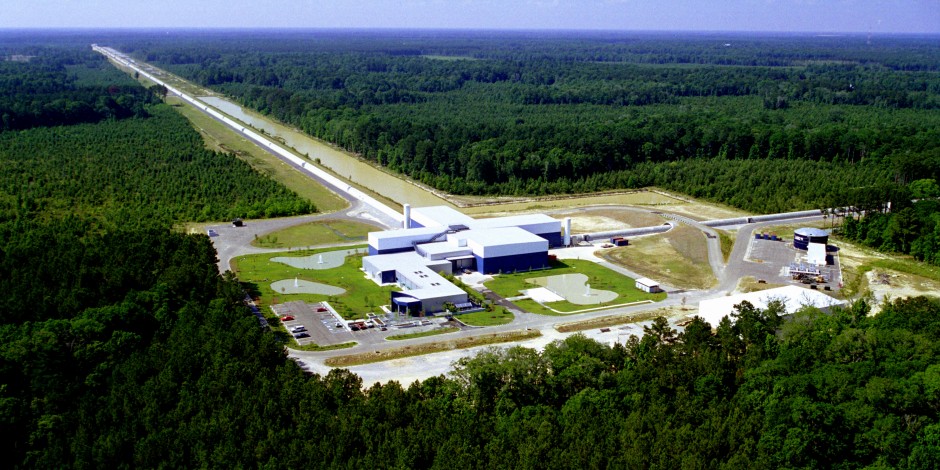The scientific highlight of the decade
The Laser Interferometer Gravitational-Wave Observatory (LIGO) has detected gravitational waves for the first time. This is one of the most important astrophysical observations since the discovery of the Cosmic Microwave Background. “We have detected gravitational waves. We did it!” said Daivd Reitze, Executive Director of the LIGO Laboratory at the California Institute of Technology, at a press conference announcing the discovery.
Scientists confirmed that the gravitational waves detected were produced in the final fraction of a second during the merging of two black holes. The collision of the black holes produced one single massive spinning black hole, which, therefore, propagated gravitational waves.
The waves were first detected on 14 September 2015 at 5:51AM Eastern Time by the LIGO detectors in both Louisiana and Washington. The power released by the merging black holes was equivalent to 50 times the power of all the stars in the visible universe! In those 20 milliseconds, the energy of the waves was equivalent to annihilating the mass of three Suns.
The black holes were confirmed to have collided 1.3 billion years ago.
It will bring to a head decades of searching by scientists, who have long sought evidence for gravitational waves. They are thought to move through the universe, squeezing and stretching the fabric of space-time, but the oscillations are incredibly small and thus very difficult to detect, requiring incredibly sensitive instrumentation such as LIGO.
"Detecting and measuring gravitational waves is the holy grail of Einstein’s theory of General Relativity," said Professor Bob Bingham, a physicist at the Science and Technology Facilities Council at Harwell Campus in the U.K. "This discovery leads the way to look back in time at the creation of the universe, with significant repercussions for ongoing astronomical research."
LIGO is made up of two detectors, one in Hanford, Washington and the other in Livingston, Louisiana. Both detectors have a laser system that allows precise measurements of space-time. At each LIGO facility, a laser beam is split into two and sent down two perpendicular tunnels, each 4 kilometers (2.5 miles) long with a mirror at the end. The lasers are reflected and then combined back together. If a gravitational wave crosses one or both lasers, it will change the distance the light had to travel, and the reconstructed beam will look different from the original.
 LIGO facility in Livingston, Lousiana. LIGO/NSF
LIGO facility in Livingston, Lousiana. LIGO/NSF
The LIGO teams from the two facilities compared notes to confirm if the observation was real or a fluke, and contacted astronomical observatories to follow up the detection with an observation of the possible cause of the gravitational wave, leading to the suspected merging black holes.
Another important piece of information to have come out of the announcement is that gravitational waves move at the speed of light. This was expected theoretically, but having this proven is important in constructing future theories. And this observation also confirms the first intermediate-mass black holes ever found. Stellar black holes are usually much smaller, reaching at most 15 solar masses. The objects observed are significantly bigger and they are believed to be a remnant of the first stars in the universe. The merger of intermediate mass black holes is thought to eventually produce the supermassive black holes observable at the center of galaxies.
"This is just the beginning," said Professor Gaby González, from Louisiana State University, in today's press conference. "It has been a very long road but this is the first of many discoveries to come. Now (...) we will being listening to the universe."
The detection of gravitational waves is truly momentous, and heralds a completely new era in astronomy. The results will be published in the journal Physical Review Letters.










